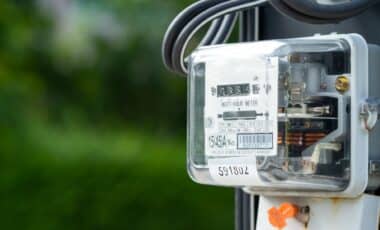Ofgem has announced plans to introduce low or no standing charge energy tariffs, aiming to provide customers with greater control over how they pay for electricity and gas. The proposal is currently under consultation, with the goal of implementing the new tariff options by winter 2025.
Under the new system, energy suppliers would be required to offer an alternative to the standing charge, allowing consumers to pay these costs through their unit rate instead.
The move comes amid growing criticism that standing charges—applied daily regardless of consumption—are particularly unfair to low-energy users and vulnerable households.
The Role of Standing Charges in Energy Bills
A standing charge is a fixed daily cost that covers the expense of supplying energy to homes and businesses. This fee helps finance the maintenance of energy networks, supplier failures, and infrastructure development.
However, because the charge applies equally to all customers, those who consume less energy end up paying a higher proportion of their bills towards these costs.
Martin Lewis, founder of MoneySavingExpert.com, highlighted that the current system means people can pay over £300 per year simply for the right to have gas and electricity, even if they barely use it.
Campaigners argue that this system disproportionately affects people who use less energy, such as elderly individuals with seasonal heating needs or low-income households trying to reduce consumption.
Many older people, for instance, only use gas for heating in the winter yet must still pay daily standing charges throughout the summer.
Balancing Fairness and Affordability
Charlotte Friel, director for retail pricing and systems at Ofgem, acknowledged the concerns but emphasised the need to balance affordability for different groups.
“We know from the huge response we’ve had that many feel standing charges are unfair,” she said.
“However, we also know that vulnerable, high-energy users—including those who rely on medical equipment at home or low-income families in poorly insulated houses—would suffer disproportionately if these costs were added to the unit rate for everyone.”
The regulator confirmed that thousands of responses have been received from the public, illustrating the strength of feeling on the issue. The new tariff system would allow consumers to choose how they pay these charges rather than removing them entirely.
Rising Energy Costs and Government Intervention
The proposal follows pressure from Energy Secretary Ed Miliband, who urged Ofgem to address rising costs. While standing charge reform may provide relief for some households, recent forecasts indicate that per-unit electricity costs will increase in April, meaning some consumers could still face higher bills even if their overall energy use remains low.
Martin Lewis welcomed Ofgem’s plans as a step in the right direction but suggested that vulnerable, low-usage customers should be automatically placed on a ‘low or no standing charge’ tariff by default, using an opt-out system to ensure they benefit.
“They’re a moral hazard that disincentivises lower users from cutting their bills,” he said.
Industry Concerns and Challenges
The energy industry has expressed concerns about the risks associated with the policy. Energy UK, which represents suppliers such as British Gas and Octopus Energy, warned that the change could create new complexities and financial challenges.
Dhara Vyas, Chief Executive of Energy UK, highlighted two key issues. First, there is a risk for suppliers, as energy firms purchase power in advance, and altering how these costs are recovered could increase financial uncertainty.
Second, the proposed changes could create complexity for consumers, who would need to actively select a tariff that best suits their needs, potentially leading to confusion and misaligned choices.









